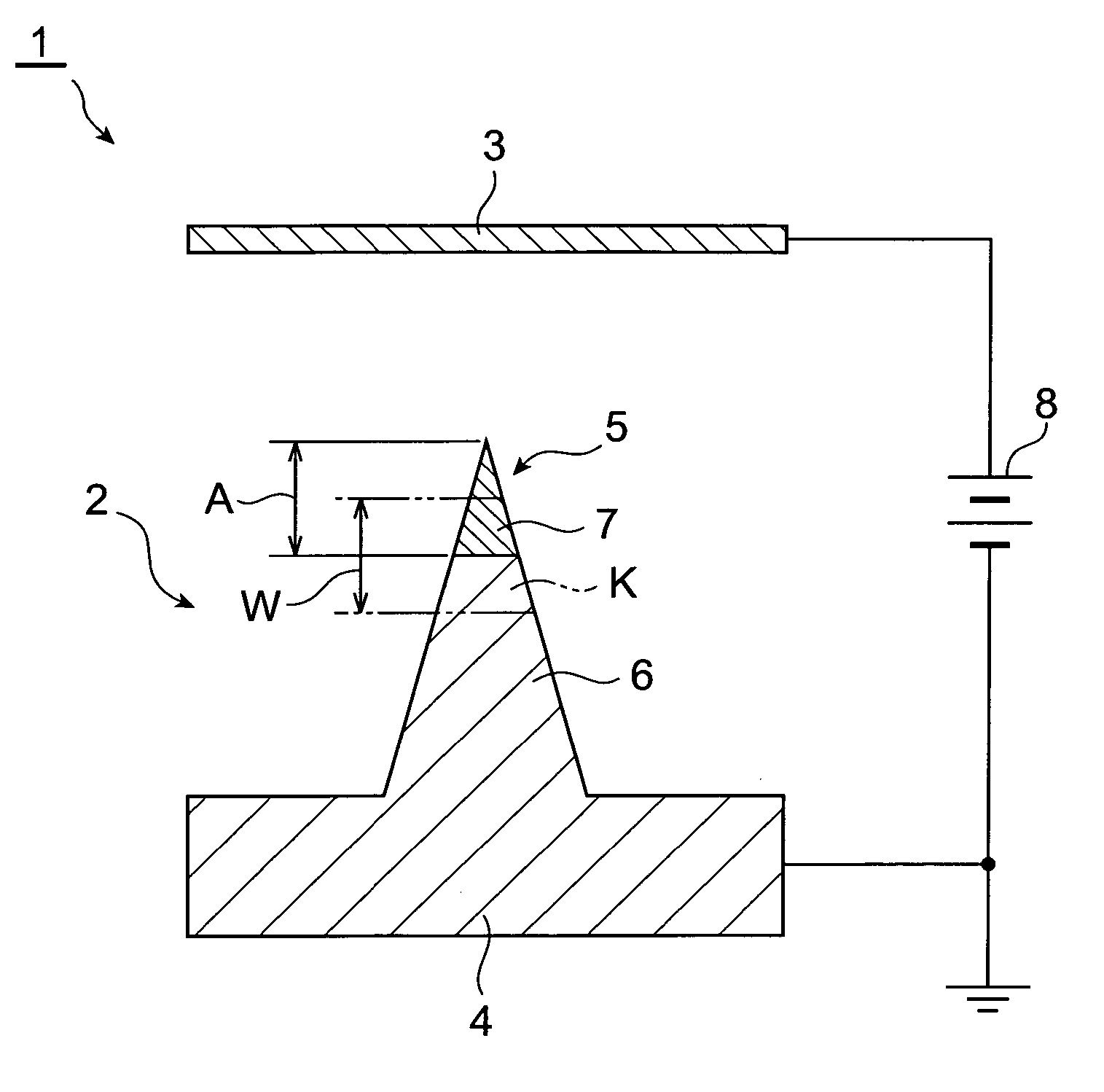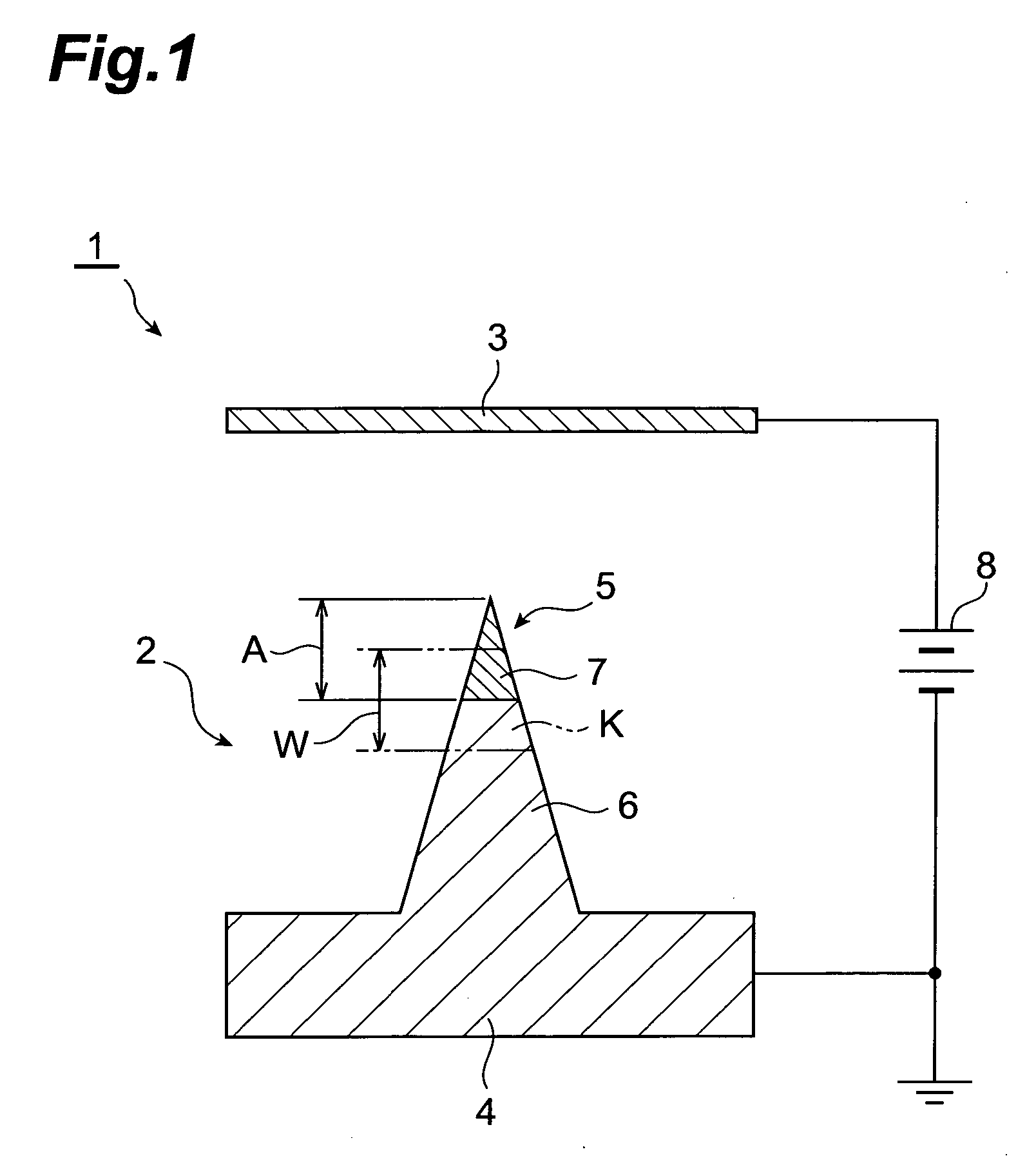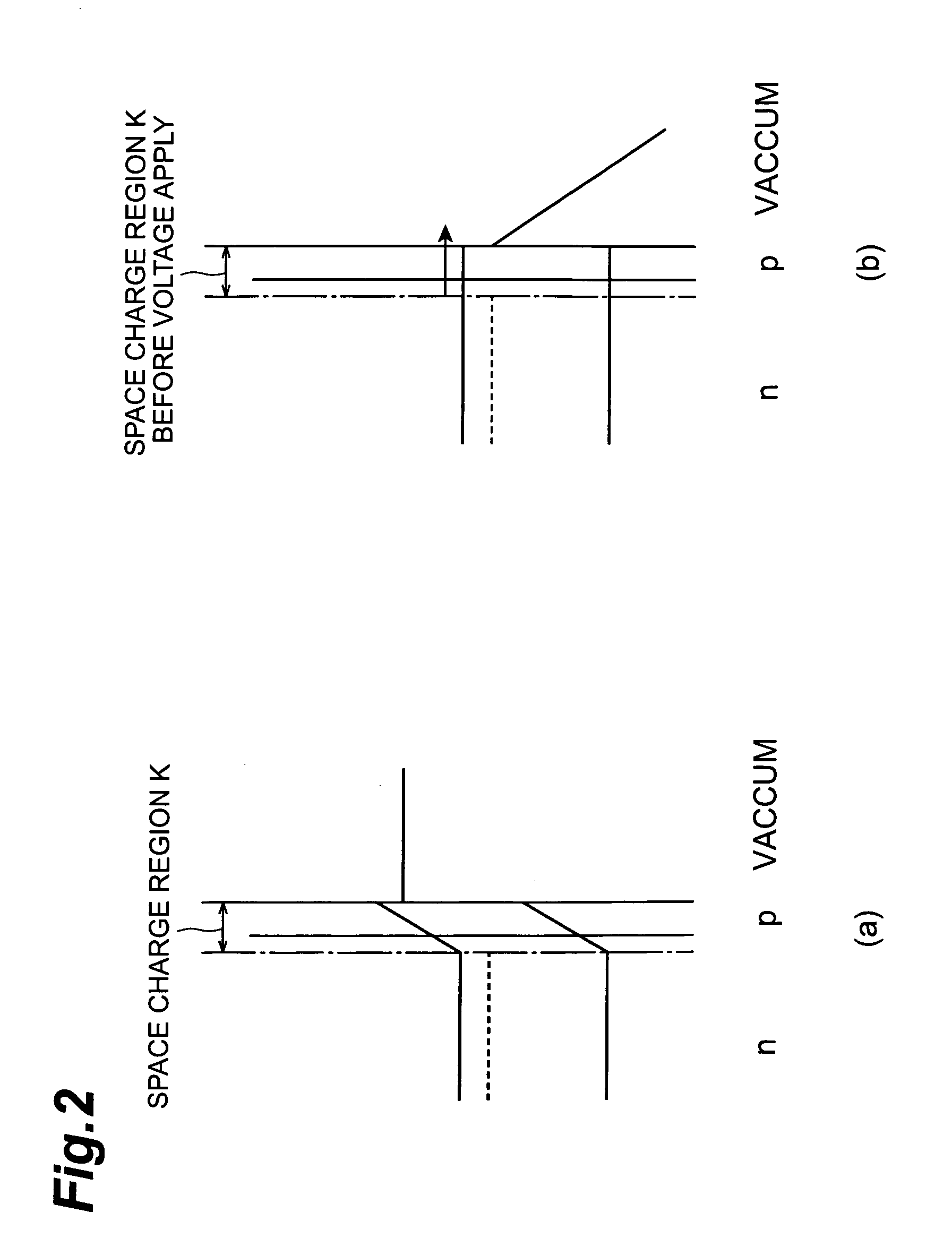Electron emitting device
a technology of electron emitting device and electron, which is applied in the direction of electric discharge tube/lamp manufacture, discharge tube luminescnet screen, therapy, etc., can solve the problems of electrons losing their energy, poor crystallinity of diamond, and not effectively injecting electrons into diamond particles on the surface, so as to reduce the energy band of space charge region, reduce the effect of crystal defects or the like in the interface, and low barrier sta
- Summary
- Abstract
- Description
- Claims
- Application Information
AI Technical Summary
Benefits of technology
Problems solved by technology
Method used
Image
Examples
first embodiment
[0035]FIG. 1 is a sectional view showing a configuration of an electron beam source having the electron emitting device according to the present invention. In this FIG. 1, the electron beam source 1 has an electron emitting device 2 made of diamonds, and a positive electrode (anode) 3 placed opposite to this electron emitting device 2. The electron emitting device 2 and anode 3 are installed in a vacuum chamber.
[0036] The electron emitting device 2 has a substrate 4 made of an n-type diamond, and a plurality of projections 5 (only one of which is shown in FIG. 1) formed on the substrate 4. The projections 5 have a pointed shape such as a conical shape or a quadrangular pyramid.
[0037] The projection 5 comprises a base 6 provided on the substrate 4 side, and an electron emission portion 7 provided on the base 6 and emitting electrons from its tip. The base 6 is made of an n-type diamond in similar to the substrate 4. The electron emission portion 7 is made of a p-type diamond.
[0038]...
third embodiment
[0062] Here, the distance L between the edge of the electroconductive material and the interface (the distance along the height direction of the electron emission portion 7) preferably satisfies the condition of L5 at the interface. In this third embodiment, the diameter of the interface is 300 nm and the distance L 200 nm.
[0063]FIG. 10 is a sectional view showing a configuration of an electron beam source having the fourth embodiment of the electron emitting device according to the present invention. In this FIG. 10 the electron beam source 30 has the electron emitting device 31 according to the fourth embodiment. The electron emitting device 31 according to the fourth embodiment also has the substrate 4 and projection 5 of the same structure as those in the electron emitting device 1 according to the first embodiment. The electron emitting device 31 according to the fourth embodiment is, however, different from the first embodiment in that it is provided with a gate electrode 33 t...
PUM
 Login to View More
Login to View More Abstract
Description
Claims
Application Information
 Login to View More
Login to View More - R&D
- Intellectual Property
- Life Sciences
- Materials
- Tech Scout
- Unparalleled Data Quality
- Higher Quality Content
- 60% Fewer Hallucinations
Browse by: Latest US Patents, China's latest patents, Technical Efficacy Thesaurus, Application Domain, Technology Topic, Popular Technical Reports.
© 2025 PatSnap. All rights reserved.Legal|Privacy policy|Modern Slavery Act Transparency Statement|Sitemap|About US| Contact US: help@patsnap.com



